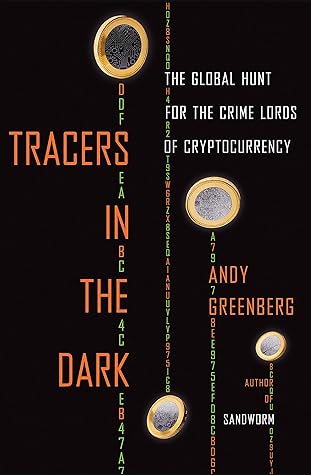More on this book
Community
Kindle Notes & Highlights
Read between
December 31, 2022 - January 7, 2023
It had taken more than a month for the FBI, DEA, and DOJ staff assigned to the investigation to even take the IRS agent’s lead seriously. Ultimately, his discovery had cracked the case.
“Americans don’t know how good they have it,” Gambaryan says. “You let it slip, it turns into the chaos that I saw.”
Who would pay taxes on these “anonymous” transactions? Wouldn’t Bitcoin become the perfect money-laundering tool?
“Participants can be anonymous,” he had read. But if this blockchain truly recorded every transaction in the entire Bitcoin economy, then it sounded like the precise opposite of anonymity: a trail of bread crumbs left behind by every single payment. A forensic accountant’s dream.
The cypherpunks were, as I’d been obsessively researching at the time, a group of radical libertarians who had formed in the 1990s, unified around the grand mission of using unbreakable encryption software to take power away from governments and corporations and give it to individuals.
Each was a tiny experiment, adding up to a study of a kind that had never been attempted before. After years of claims about Bitcoin’s anonymity—or lack thereof—made by its users, its developers, and even its creator, Meiklejohn was finally putting its privacy properties to the test.
She aimed to prove, beyond any doubt, that Bitcoin transactions could very often be traced. Even—or, in fact, especially—when the people involved thought they were anonymous.
There was a maxim in cryptography, often referred to as Schneier’s law after the cryptographer Bruce Schneier. It asserted that anyone can develop an encryption system clever enough that they can’t themselves think of a way to break it. Yet, like all the best conundrums and mysteries that had fascinated Meiklejohn since childhood, another person with a different way of approaching a cipher could look at that “unbreakable” system and immediately see a way to crack it and unspool a whole world of decrypted revelations.
The blockchain, like a massive, undeciphered corpus of an ancient language, hid a wealth of secrets in plain view.
The Department of Justice would ultimately argue that because the server was located abroad, the Fourth Amendment privacy protections against warrantless searches—including potentially hacking it—didn’t apply.
The two men, like the Dread Pirate Roberts they were hunting, had been seduced by the same siren song: the false promise of untraceable money.
“Oh, Octopus Guy,” Faruqui had explained. “You don’t have Octopus Guy. We have Octopus Guy.”
“Every Bitcoin user has access to the public Bitcoin blockchain and can see every Bitcoin address and its respective transfers. Due to this publicity, it is possible to determine the identities of Bitcoin address owners by analyzing the blockchain,” the ruling read. “There is no intrusion into a constitutionally protected area because there is no constitutional privacy interest in the information on the blockchain.”
The HSI agent wasn’t caught in the Welcome to Video dragnet because IRS agents had violated his privacy. He was caught, the judges concluded, because he had mistakenly believed his Bitcoin transactions to have ever been private in the first place.
“You know like, you’re buying an ice cream cone, and then it turns out not to be an ice cream cone but the exact opposite of an ice cream cone?
“Privacy is a really hard problem,” Green said in summation.
Chainalysis in the budding blockchain analysis industry will make their real money, she speculates, not from contracts with the IRS or the Justice Department but from banks and exchanges who are using their services to “de-risk” their transactions, ranking a certain sum of money’s cleanliness and regulatory liability based on algorithms the public will never see.
“It’s very easy for there to be that kind of mission creep,”


